- Home
- Thomas Keneally
Eureka to the Diggers
Eureka to the Diggers Read online
Praise for Australians: Origins to Eureka
‘When it comes to writing page-turning narrative no one does it better than Thomas Keneally . . . no doubt about it, Australians is a corker.’
— Cassandra Pybus, Weekend Australian
‘. . . the story of Australia and the Australians could be in no better hands than Keneally’s.’ — West Australian
‘Keneally evokes these distant lives with concrete detail and vivid sympathy . . . his people inhabit the same world we do —we meet them without the hesitation of reaching across voids of space and time.
— Marian Quartly, Sydney Morning Herald
‘[Australians] will appeal to the general reader and the avid historian alike, and this is only the first volume. This reader can’t wait for the second.’
— Bookseller + Publisher
‘Volume one of Australians builds a sense of historical wonder.’
— Stephen Wilks, Canberra Times
‘This new perspective on Australia’s founding fathers is truly fascinating.’
— Sandy McCutcheon, Courier-Mail
First published in Australia in 2011
Copyright © Thomas Keneally 2011
All rights reserved. No part of this book may be reproduced or transmitted in any form or by any means, electronic or mechanical, including photocopying, recording or by any information storage and retrieval system, without prior permission in writing from the publisher. The Australian Copyright Act 1968 (the Act) allows a maximum of one chapter or 10 per cent of this book, whichever is the greater, to be photocopied by any educational institution for its educational purposes provided that the educational institution (or body that administers it) has given a remuneration notice to Copyright Agency Limited (CAL) under the Act.
Allen & Unwin
Sydney, Melbourne, Auckland, London
83 Alexander Street
Crows Nest NSW 2065
Australia
Phone: (61 2) 8425 0100
Fax: (61 2) 9906 2218
Email: [email protected]
Web: www.allenandunwin.com
Cataloguing-in-Publication details are available from the National Library of Australia
www.trove.nla.gov.au
ISBN 978 1 74237 448 2
Typeset in 11.5/15pt Minion by Midland Typesetters, Australia
Printed and bound in Australia by Ligare Pty Ltd, Sydney
10 9 8 7 6 5 4 3 2 1
ebook Producation by Midland Typesetters Australia
To my brother, John Patrick Keneally, honoured medical specialist, with whom I have shared nearly seven decades of Australian history
Acknowledgements
From 1860 to the Diggers
Chapter 1 Old and new faces in a colonial society
1860s to 1870s
Chapter 2 Taking further shape
1860s to 1870s
Chapter 3 One hundred years complete
1880s
Chapter 4 The last colonial decade
1890s
Chapter 5 Seeking Federation, and having it
Late 1890s to 1914
Chapter 6 The Great War
Onset and the early gambits
Chapter 7 War and peace
From France and Flanders to the peace
Timeline to 1919
Notes
These are the generous people who proved essential to this book but who bear no blame for its faults and are responsible for any of its virtues.
Firstly, Jo Kildea, the chief researcher, shows herself so highly accomplished at the task, and indeed is such a good writer, that maybe I should have left the entire task to her. She also compiled the chronology which appears in this book.
Before Jo Kildea joined the project, my skilled and generous daughter Margaret Keneally hunted down the correspondence of the Dickens’ brothers and other figures who appear early in the narrative.
With my editor Rebecca Kaiser at Allen & Unwin, I enjoyed a relationship which seemed to consist of as much laughter as effort. Rebecca knows how to anaesthetise the writing process, to take the edge off the pain and add to the pleasure.
Patrick Gallagher, head of Allen & Unwin, thought up this series in the first instance, and so it is my wish that he is as pleased with this volume as he kindly professed himself to be with Volume I.
My agent Fiona Inglis has been an impeccable representative and dear friend. Her advice is measured and always effective, her championship of her authors and her loyalty to them is of such a high order that it bespeaks high character as well as high professionalism.
The copy editor Ali Lavau was as perceptive and tactful as she had been on other works of mine, and the photo editor, Linda Brainwood, seems to have the same taste as myself for pictures rarely seen in standard texts and which will thus help the reader see Australia anew.
My wife Judy, who has lived with me through this berserk career, is a natural editor, a first port of call for my early ill-formed chapters, who tells the truth about failed passages and phrases with tact, and is wonderfully enthusiastic for what all writers want to produce—the good bits.
May all of you flourish!
If you are like me, you do not always read author’s notes. So I had better tell you at the start of this story what you can expect, and what I am trying to give you through the lives of the remarkable Australian women and men we will meet here.
A character in one of my novels says, ‘History is a bugger when you’re in it.’ So what I am trying to present in these pages is the narrative of men and women struggling with the histories in which they are stuck, histories in which some perish, histories through which others endure, histories through which some dance. Sometimes, as happened in the first volume, I introduce more obscure Australians, but at other times take a fresh look at the Australians most intelligent readers think of as settled in dour civic memory, but who were men and women of vivid dreams and complicated ambitions. I cannot cover the careers of all those Australians, well-known or not, who would be eligible for inclusion. And there are some figures I intended to include but who do not appear here except perhaps by occasional mention. Amongst these is the remarkable Daisy Bates, early champion of Central Australian Aboriginals; the great diva Dame Nellie Melba; and Victor Trumper, the splendid cricketer. To illustrate the phenomenon of banditry in Australia, the story of some bushrangers is told in preference to others. Not every Aboriginal resistance fighter is mentioned, nor every social reformer, nor every high ranking digger nor valiant nurse. Some early film entrepreneurs and actors are dealt with in preference to others.
But I believe I have chosen a formidable group of people who are entirely appropriate to the purpose of the book. And that purpose is to attempt to place the reader inside the very flesh and breath and passion of Australian life in the past. The people of this book are the lenses through which—at least I hope—you will more than adequately see Australia’s history play itself out. If the author does not succeed in doing this, he extends his sincerest apologies.
So let us begin with these people.
From 1860 an era commenced in which Australians pursued glimmering visions of equity but also engaged in savage class conflict; became a place of cities but ‘unlocked’ the land to redeem the immigrant and native-born from urban squalor; dreamed of the illimitable continent whose limits painfully revealed themselves; became a nation but retained provincial objectives; was independent and craftily subservient; made a legend out of bushrangers, industrial fights and brutal wars, but underestimated how,
beneath these things, the living flesh of ordinary men and women shuddered and trembled; honoured anti-authoritarianism but saw no revolution arise; saw the immigrants increase and the indigenes diminish; planned big for the Australian North but could barely populate it; sought racial whiteness as the sole possible condition of its life yet spent an era quaking at the closeness of Asia and the militancy of Japan; became in the mind of the world, and in its own mind, the Working Man’s Paradise, but retained what Lawson called ‘the armies of the rear’, the regiments of want; and was a nation of both vision and earthy pragmatism. This was the country of the larrikin and the emergent artist; of the prophetic and the hard-nosed; of radical oratory and ultimate respect for society’s structures; the Promised Land and the land the immigrant would have left had he owned the fare home. Suffusing it all was the idea that, although provincial, we were an especial people; that although distant, in our social experiments and reforms, we were a society the world had much to learn from; that we were better than those who thought us crass and that, unleashed, we would show them a thing or two. The thunderclap of a world-wide war reinforced the mythology of Australian uniqueness even while helping create a world that widened class schisms and bespoke unresolved and coming peril.
It can be asserted again, in the hope that the book confirms the assertion, that none of this was dull.
Conviction was at an end in Eastern Australia, but because of its shame it had induced in the white community a tendency to pretend that all convicts ceased breathing and vanished utterly at the date of the abolition of transportation. Much later in the nineteenth century, the Bulletin wrote that the day ‘among all others which has been forced upon us as the natal-day of Australia is that which commemorates her shame and degradation’. Nowhere was the taint, and the desire and impossibility of forgetting, more intense than in Tasmania.
The convicts, however, were in many cases still serving sentences, or else living in the community, some of them lost souls, some cherished by families, some treasured even by society at large. The lost souls were numerous, though it can be argued these were far from being the majority.
At Port Arthur, in the era of transportation, a separate prison had been built to impose on prisoners a soul-scarifying form of solitary confinement: the Pentonville system, in which convicts worked in silence and had no contact with each other. Silence, solitude and lack of stimulation were considered the new cure for criminality. At their brief exercise in the yard, men wore masks. Even in the chapel each worshipper was screened off from every other, so that glances could not be exchanged. The system made the criminal more criminal, the deranged more deranged still. Perhaps these results can be seen in the case of two convicts who experienced the old system and the separate, Pentonville system as well. Mark Jeffery, a burglar when transported in 1850, had experienced this separate prison before his release in 1870. After a fight in a pub in which a man was killed, he was convicted of manslaughter and sent back to Port Arthur for life, where again he experienced the separate prison. There he tried to murder the doctor and, seeing that he was both unstable and dangerous, the authorities sent him to the Isle of the Dead off Port Arthur as the grave-digger. There the devil himself, ‘His Satanic Majesty’, appeared in Jeffery’s hut and spoke to him. Jeffery begged to be released from the island and was sent to Hobart gaol in 1877, being guilty there of more assaults. Photographed in the 1890s, the former hulking terror of a man supports himself on two sticks. He ended in the Launceston Invalid Depot, where he died in 1903. Like a number of other male convicts he left no recorded Australian family behind him.
Richard Pinches had spent fourteen years on Norfolk Island for stealing shirts, and then served time in solitary in Port Arthur after the convict establishment in Norfolk Island was moved there in 1853. Released, he was tried for stealing pigs in 1860 and sentenced to four more years at Port Arthur. Then, at large after an escape, he broke into a building and was sent back to Port Arthur again for five years. By 1875 he was freed with a ticket of leave but then received a further sentence of fourteen years for larceny and a burglary in Hobart. For all his impulse to flee prison, he devoted his life to ensuring his return to it.
There were happier stories. An old lag named Jack Best worked as a guide at Port Arthur after it was closed, and was a favourite with Tasmanians and other visitors to the haunted place, having the last word on what had happened there.
Margaret Dalziel had arrived in Hobart from Glasgow in 1851 under a ten-year sentence for the highway robbery of a tin case and registered papers. She was a small woman, barely 5 feet, who was assigned as a convict servant to a number of masters—including James Hirst, overseer of the coal mines—but absconded and ended up in the Female Factory. In 1857 she was at Impression Bay Probation Station, where Scottish immigrants stricken with typhus from the immigrant ship Persian were quarantined. Perhaps she was selected because she could speak Gaelic and the ship was full of Highlanders. Margaret received her ticket of leave for her work there. In 1860 she was living with a former convict, Robert Carter, and had a son named James. Having begun a free life, she then disappeared from the record.
Mary Witherington, born in England in 1805, died in the town of Ross in Van Diemen’s Land in 1890. She had been transported for stealing a blanket while working as a housemaid in London. In 1835 she married a convict stonemason, Daniel Herbert, transported for life in 1827 for highway robbery. He was subjected to severe punishments for idleness, insolence, drink and absconding. But he worked as an overseer on the Ross Bridge, a fascinating little sandstone arch which is decorated with the faces of many of the citizens, convict and free, of Tasmania, as well as those of classic and Celtic mythology. One of the faces is of the Viking of Van Diemen’s Land, briefly a former President of Iceland, Jorgen Jorgensen. Another is Herbert’s wife, Mary.
Most former convicts came from the labouring classes but there were, as there had been from the beginning, the bourgeois ex-convicts. Francis Abbott had been a watchmaker transported for seven years in 1844 for acquiring watches by false pretences. He had a wife and seven children for whom his arrest and sentencing must have been a great crisis, but all of them would follow him to Van Diemen’s Land. He not only ran a successful jewellery business in Hobart but by 1860 was a member of the Royal Society of Tasmania and a fellow of the Royal Astronomical Society, London, and was made a fellow of the Royal Meteorological Society in 1869. He contributed meteorological data to the Papers and Proceedings of the Royal Society of Tasmania from 1873–74.
Even more notable was the career of the Irish political prisoner and surgeon, Kevin Izod O’Doherty, involved in the abortive Irish Famine uprising of 1848 and transported to Van Diemen’s Land the following year. Pardoned in 1856, by 1862 he had settled in the new colony of Queensland, doing so partly under the influence of his friend Bishop James Quinn, whose desire was to populate Queensland with the Irish. O’Doherty moved there with his young wife Eva, a notable Irish poet. By the mid-1860s O’Doherty was one of the two most esteemed Brisbane surgeons, founding president of the Queensland Medical Association, a member both of the militia and of the Queensland parliament, and a pioneer of public health and quarantine in that city. Though tragedy would take his two brilliant sons from him, and liquidity problems and anti-Irish bigotry later blight his life, he was for many decades, a model of the successful ex-convict.
Anthony Trollope, visiting his son in Australia in 1871–72, felt that the fact that New South Wales had such a vast hinterland in comparison to Tasmania allowed people in the founding colony to believe that former convicts ‘have wandered away whither they would. Now and then a good-natured reference is made, in regard to some lady or gentleman, to the fact that his or her father was “lagged”, and occasionally up in the bush a shepherd may be found who will own to the soft impeachment of having been lagged himself.’ Although many families kept quiet about their connections to convictism, there was a less frantic attitude to the mat
ter.
Some children of convicts had great longevity. Jim Kelly, surviving brother of Ned Kelly and son of the Vandemonian convict Red Kelly, was a boy in prison in Wagga at the time of the Kelly outbreak in 1880. When released, he worked as a farmer on the family’s small block at East Greta, not far from Glenrowan, and under a reformed administration, was never in trouble again. (In the late 1930s he attended the opening of Woolworths in Benalla.) Significantly he died a hundred years after the great anti-transportation protests of 1842, and after the fall of Singapore. The eldest son of Irish convicts Hugh Larkin and Mary Shields, born in a bush hut at Coolringdon Station in 1845, worked long after the end of transportation as a blacksmith in Gundaroo and was still alive in 1920.
Did former Vandemonian and New South Wales convicts settle in South Australia? It would be remarkable if they did not, thus rendering the colony less pure than it chose to think itself. The South Australian Act of 1838 excluded them, and Adelaide’s first execution, in 1839, was of an escaped Irish convict from New South Wales named Michael Magee. Other convicts and ticket-of-leave men came as members of droving parties, and some settled in shacks in the Adelaide Hills and were referred to as Tiersmen, fearless, lawless Irish who lived on the tiers of the hills above the Anglican plain of Adelaide. One of these men, Tolmer, was hanged for bushranging and outraged decent citizens by smoking his pipe on the scaffold. Other ex-convicts worked for the South Australian Company itself at its Encounter Bay whaling station, again as early as 1839. That some of them did not marry or beget young South Australians is improbable.
Western Australia remained the only Australian colony accepting convicts in the 1860s. From a want of labour, and under the aegis of Earl Grey, the British Secretary of State, in 1849 it had adopted the practice it once renounced, just as the other colonies were abandoning transportation. It wanted only those convicts whose prison record was good. The first load of seventy-five sailed for Western Australia in March 1850 on the Scindian, and on that and later ships the prisoners were guarded by military pensioners—that is, veterans who travelled with their families to Western Australia, where they were contracted to spend a number of years as penal guards in return for an ultimate land grant. Few of them, of course, went back. Even in the convict system, population building was the primary concern in Western Australia. And there was evidence that, having served in the ranks of the British army, the guards had a good sense of how men behaved under humiliation of sentence and were often less authoritarian and more compassionate than professional gaolers.

 Confederates
Confederates Flying Hero Class
Flying Hero Class Gossip From the Forest
Gossip From the Forest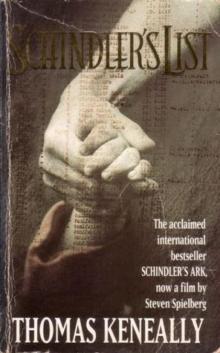 Schindler's List
Schindler's List Bring Larks and Heroes
Bring Larks and Heroes Australians: Flappers to Vietnam
Australians: Flappers to Vietnam The People's Train
The People's Train Crimes of the Father
Crimes of the Father A Family Madness
A Family Madness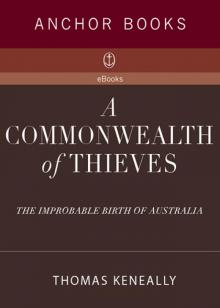 A Commonwealth of Thieves
A Commonwealth of Thieves Ned Kelly and the City of Bees
Ned Kelly and the City of Bees A River Town
A River Town Bettany's Book
Bettany's Book Blood Red, Sister Rose: A Novel of the Maid of Orleans
Blood Red, Sister Rose: A Novel of the Maid of Orleans Victim of the Aurora
Victim of the Aurora American Scoundrel American Scoundrel American Scoundrel
American Scoundrel American Scoundrel American Scoundrel Three Cheers for the Paraclete
Three Cheers for the Paraclete Australians: Origins to Eureka: 1
Australians: Origins to Eureka: 1 The Power Game
The Power Game The Chant Of Jimmie Blacksmith
The Chant Of Jimmie Blacksmith The Daughters of Mars
The Daughters of Mars Searching for Schindler
Searching for Schindler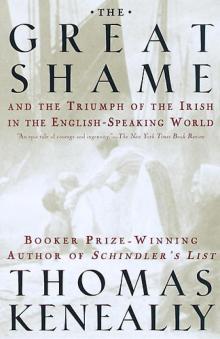 The Great Shame: And the Triumph of the Irish in the English-Speaking World
The Great Shame: And the Triumph of the Irish in the English-Speaking World Abraham Lincoln
Abraham Lincoln The Widow and Her Hero
The Widow and Her Hero Eureka to the Diggers
Eureka to the Diggers Shame and the Captives
Shame and the Captives The Survivor
The Survivor Jacko: The Great Intruder
Jacko: The Great Intruder The Book of Science and Antiquities
The Book of Science and Antiquities Homebush Boy
Homebush Boy The Playmaker
The Playmaker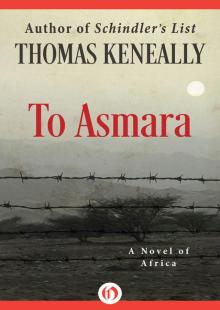 To Asmara: A Novel of Africa
To Asmara: A Novel of Africa A Woman of the Inner Sea
A Woman of the Inner Sea The Tyrant's Novel
The Tyrant's Novel Australians
Australians Schindler's Ark
Schindler's Ark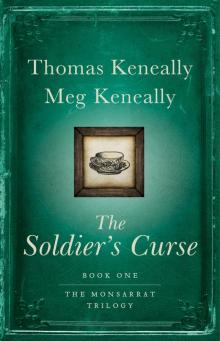 The Soldier's Curse
The Soldier's Curse Australians, Volume 3
Australians, Volume 3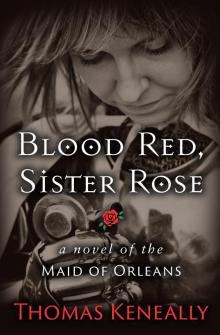 Blood Red, Sister Rose
Blood Red, Sister Rose A Victim of the Aurora
A Victim of the Aurora The Unmourned
The Unmourned Australians, Volume 2
Australians, Volume 2 To Asmara
To Asmara